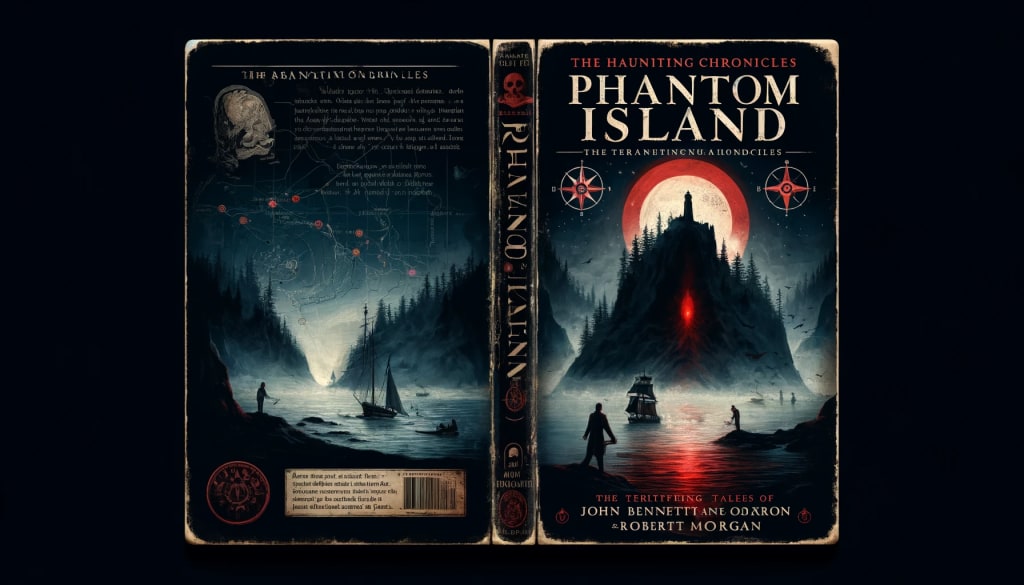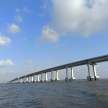Phantom Island: The Haunting Chronicles
The Terrifying Tales of John Bennett and Robert Morgan

On October 23rd, 1820, British sailor John Bennett and his men landed on an island near the southern tip of South America, which he eventually named Phantom Island. The next two days were marked by mysterious and unbelievable events, details of which Bennett refused to make public until shortly before his death in 1877. What happened 137 years later, when a group of Canadian scientists landed on the island, was even more horrific, fueling speculation that the island should be left alone and uninhabited. Over the years, research stations have been established and abandoned for various reasons, some of which remain unknown. The events of 1957 were kept secret by the Canadian government until British-born scientist Robert Morgan eventually broke his silence.
This is John Bennett's story, transcribed into present-day English:
As I set foot on the shore of what I later named Phantom Island, a sense of uneasiness overcame me. I had landed on many shores over the years as a sailor and had never felt this way before. Looking around, I felt as if I were being watched, despite knowing the island should be uninhabited except for some wildlife. I told my men to set up camp just above the high tide mark since it was nearing evening, and we planned to explore at first light.
Each morning, we did a head count to ensure no one had disappeared during the night. On the first morning, as I took a sip of coffee, someone yelled, "Smith and Taylor are gone!" I ran to their tent and saw they were indeed missing. I quickly organized four search parties to scour the island, instructing them to have their weapons ready. I took two men with me and headed towards a rock outcropping, discussing where Smith and Taylor could be.
We found human footprints in the sand and clothing belonging to one of the men. There were also drag marks, indicating something had been dragged. Nearby, we saw a cave at the bottom of the rocks where the footprints led. "Harris, be ready with your rifle," I said. As we approached the cave, I drew my pistol. The tension was palpable; these men were sailors, not warriors. I had fought in the Napoleonic Wars and had a sense for when something dire was about to happen.
I entered the cave first, with the men following closely. Inside, it was dark, with only faint light filtering through. As we ventured deeper, we lit candles. Soon, I heard moaning and something moving but couldn’t see what it was. We turned a corner and stopped abruptly. Before us lay the naked bodies of Smith and Taylor, their skin completely removed, and their bodies appearing inside out. One of them, barely alive, raised his arm and handed me a brilliant red stone before dying.
I instructed the men to fetch blankets to carry the bodies back to camp. The sense of dread told me we needed to leave the island immediately. We planned to stay for six days, but I knew we had to leave the next day. When we buried Smith and Taylor, some men believed it was the work of the devil or witchcraft. I didn’t know what to believe, only that we needed to leave.
The following morning, we packed up quickly. As some men went to relieve themselves, they discovered the empty graves of Smith and Taylor. "Men, gather your things. We're leaving now," I ordered. As we departed, someone remarked, "This island is an evil place and should be left alone." I agreed, never intending to return.
This is Robert Morgan’s story, told in his own words:
In 1957, I was stationed on Phantom Island with four other scientists. It was January, and the weather was relatively warm. The first week was normal until the eighth day when my friends and fellow geologists, Ian and Ross, brought back sediment samples from the volcano. That night, I woke up late to find them standing in their study room, whispering with their backs turned to me. It seemed odd, but I dismissed it.
The next morning, they were still standing in the same spot, unresponsive. Concerned, I mentioned it to Peter and Max, but they shrugged it off. That day, while collecting marine samples on the beach, I felt an eerie sense of being watched. Upon returning to the station, we discovered Ian and Ross were missing. We decided to wait until morning to search for them, but by the next day, they were still gone.
We radioed for help, and the next day, a team from Stanley Island arrived. That night, I was awakened by someone shouting for help. I found Max being attacked by two skinless men. Terrified, I ran to Peter’s room and woke him up. As the skinless men approached, they attacked Peter. I grabbed a fire axe but panicked and hid in the walk-in fridge, tying the door shut with twine.
The next thing I remember was being awakened by rescuers from the Norwegian research station. They found no trace of Ian, Ross, or the skinless men, only blood and red stones. The Canadian government sent a special team to investigate but found nothing. Years later, a member of that team approached me, confirming they too encountered issues but would not elaborate. His final advice was to stay away from the island.
John Bennett's Tale: A Chilling Discovery
As I set foot on the shore of what I later named Phantom Island, a sense of uneasiness overcame me. I had landed on many shores over the years as a sailor and had never felt this way before. Looking around, I felt as if I were being watched, despite knowing the island should be uninhabited except for some wildlife. I told my men to set up camp just above the high tide mark since it was nearing evening, and we planned to explore at first light.
Each morning, we did a head count to ensure no one had disappeared during the night. On the first morning, as I took a sip of coffee, someone yelled, "Smith and Taylor are gone!" I ran to their tent and saw they were indeed missing. I quickly organized four search parties to scour the island, instructing them to have their weapons ready. I took two men with me and headed towards a rock outcropping, discussing where Smith and Taylor could be.
We found human footprints in the sand and clothing belonging to one of the men. There were also drag marks, indicating something had been dragged. Nearby, we saw a cave at the bottom of the rocks where the footprints led. "Harris, be ready with your rifle," I said. As we approached the cave, I drew my pistol. The tension was palpable; these men were sailors, not warriors. I had fought in the Napoleonic Wars and had a sense for when something dire was about to happen.
I entered the cave first, with the men following closely. Inside, it was dark, with only faint light filtering through. As we ventured deeper, we lit candles. Soon, I heard moaning and something moving but couldn’t see what it was. We turned a corner and stopped abruptly. Before us lay the naked bodies of Smith and Taylor, their skin completely removed, and their bodies appearing inside out. One of them, barely alive, raised his arm and handed me a brilliant red stone before dying.
I instructed the men to fetch blankets to carry the bodies back to camp. The sense of dread told me we needed to leave the island immediately. We planned to stay for six days, but I knew we had to leave the next day. When we buried Smith and Taylor, some men believed it was the work of the devil or witchcraft. I didn’t know what to believe, only that we needed to leave.
The following morning, we packed up quickly. As some men went to relieve themselves, they discovered the empty graves of Smith and Taylor. "Men, gather your things. We're leaving now," I ordered. As we departed, someone remarked, "This island is an evil place and should be left alone." I agreed, never intending to return.
Robert Morgan's Account: The Sinister Return
In 1957, I was stationed on Phantom Island with four other scientists. It was January, and the weather was relatively warm. The first week was normal until the eighth day when my friends and fellow geologists, Ian and Ross, brought back sediment samples from the volcano. That night, I woke up late to find them standing in their study room, whispering with their backs turned to me. It seemed odd, but I dismissed it.
The next morning, they were still standing in the same spot, unresponsive. Concerned, I mentioned it to Peter and Max, but they shrugged it off. That day, while collecting marine samples on the beach, I felt an eerie sense of being watched. Upon returning to the station, we discovered Ian and Ross were missing. We decided to wait until morning to search for them, but by the next day, they were still gone.
We radioed for help, and the next day, a team from Stanley Island arrived. That night, I was awakened by someone shouting for help. I found Max being attacked by two skinless men. Terrified, I ran to Peter’s room and woke him up. As the skinless men approached, they attacked Peter. I grabbed a fire axe but panicked and hid in the walk-in fridge, tying the door shut with twine.
The next thing I remember was being awakened by rescuers from the Norwegian research station. They found no trace of Ian, Ross, or the skinless men, only blood and red stones. The Canadian government sent a special team to investigate but found nothing. Years later, a member of that team approached me, confirming they too encountered issues but would not elaborate. His final advice was to stay away from the island.
About the Creator
Enjoyed the story? Support the Creator.
Subscribe for free to receive all their stories in your feed. You could also pledge your support or give them a one-off tip, letting them know you appreciate their work.






Comments
There are no comments for this story
Be the first to respond and start the conversation.